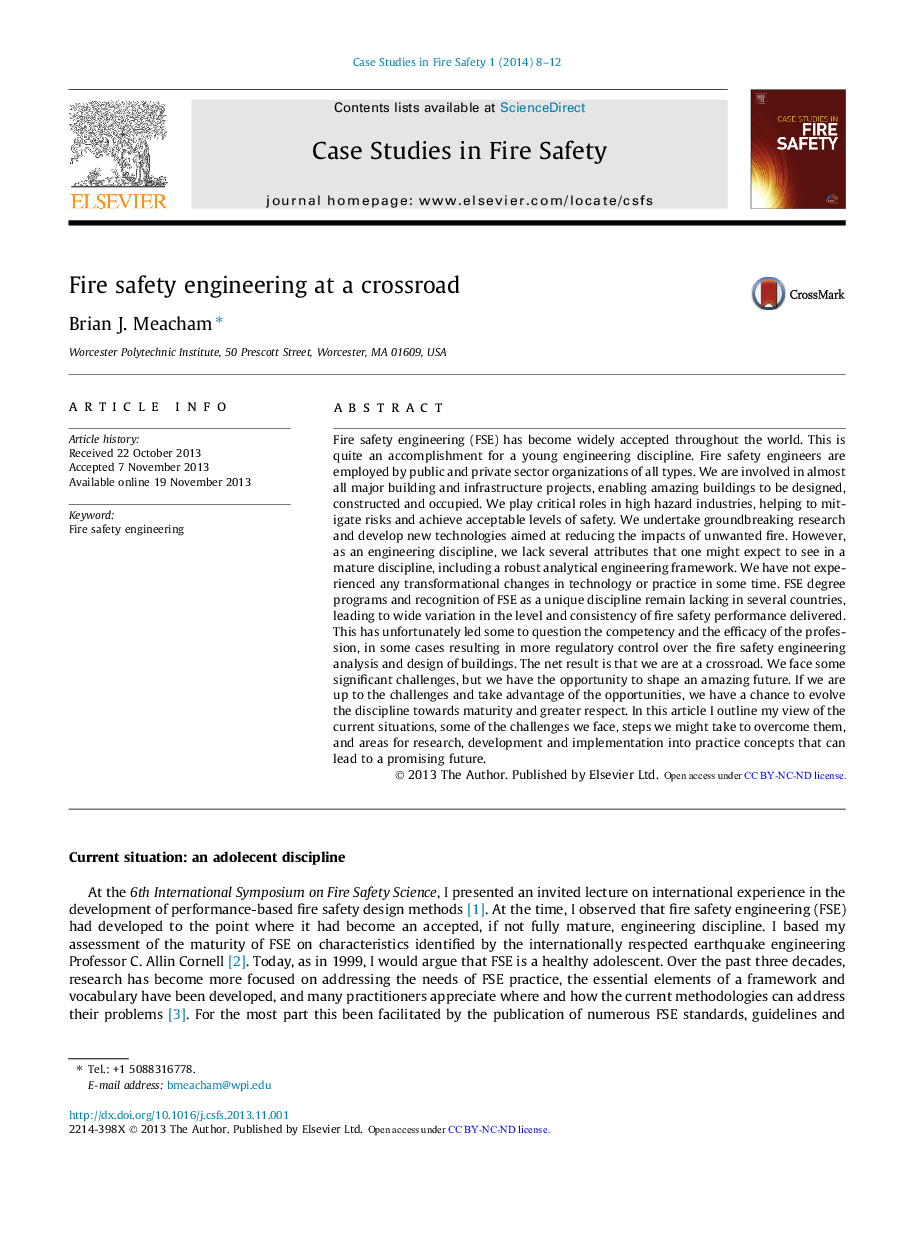| Article ID | Journal | Published Year | Pages | File Type |
|---|---|---|---|---|
| 250556 | Case Studies in Fire Safety | 2014 | 5 Pages |
Fire safety engineering (FSE) has become widely accepted throughout the world. This is quite an accomplishment for a young engineering discipline. Fire safety engineers are employed by public and private sector organizations of all types. We are involved in almost all major building and infrastructure projects, enabling amazing buildings to be designed, constructed and occupied. We play critical roles in high hazard industries, helping to mitigate risks and achieve acceptable levels of safety. We undertake groundbreaking research and develop new technologies aimed at reducing the impacts of unwanted fire. However, as an engineering discipline, we lack several attributes that one might expect to see in a mature discipline, including a robust analytical engineering framework. We have not experienced any transformational changes in technology or practice in some time. FSE degree programs and recognition of FSE as a unique discipline remain lacking in several countries, leading to wide variation in the level and consistency of fire safety performance delivered. This has unfortunately led some to question the competency and the efficacy of the profession, in some cases resulting in more regulatory control over the fire safety engineering analysis and design of buildings. The net result is that we are at a crossroad. We face some significant challenges, but we have the opportunity to shape an amazing future. If we are up to the challenges and take advantage of the opportunities, we have a chance to evolve the discipline towards maturity and greater respect. In this article I outline my view of the current situations, some of the challenges we face, steps we might take to overcome them, and areas for research, development and implementation into practice concepts that can lead to a promising future.
